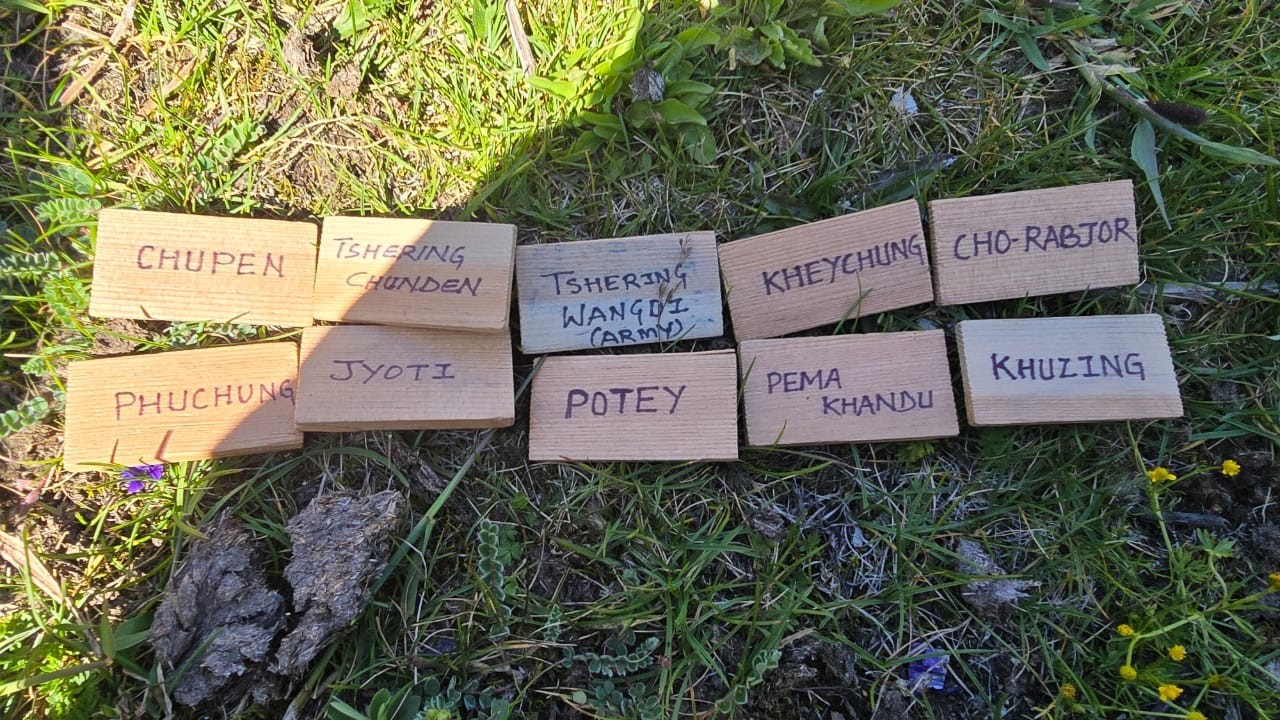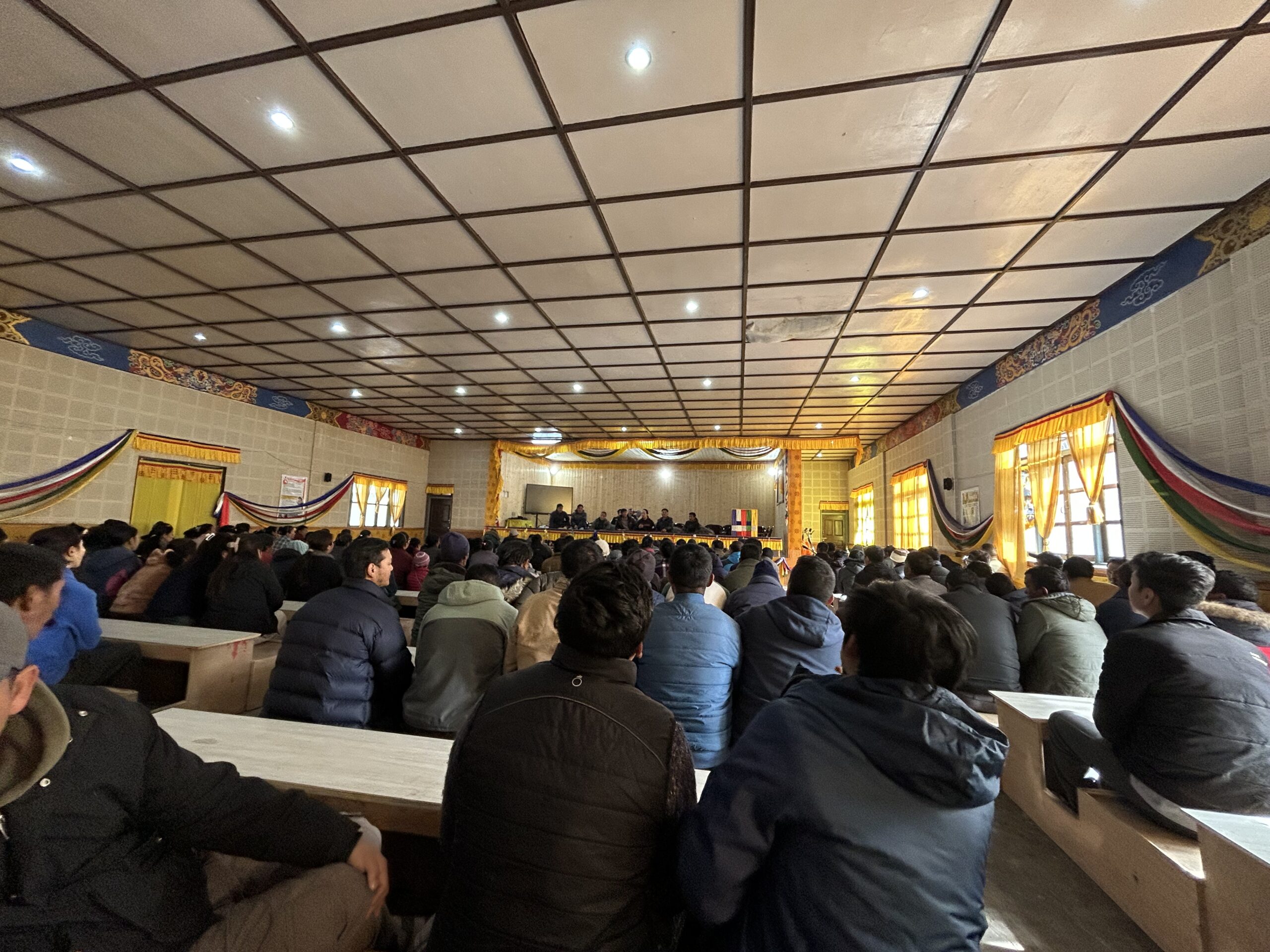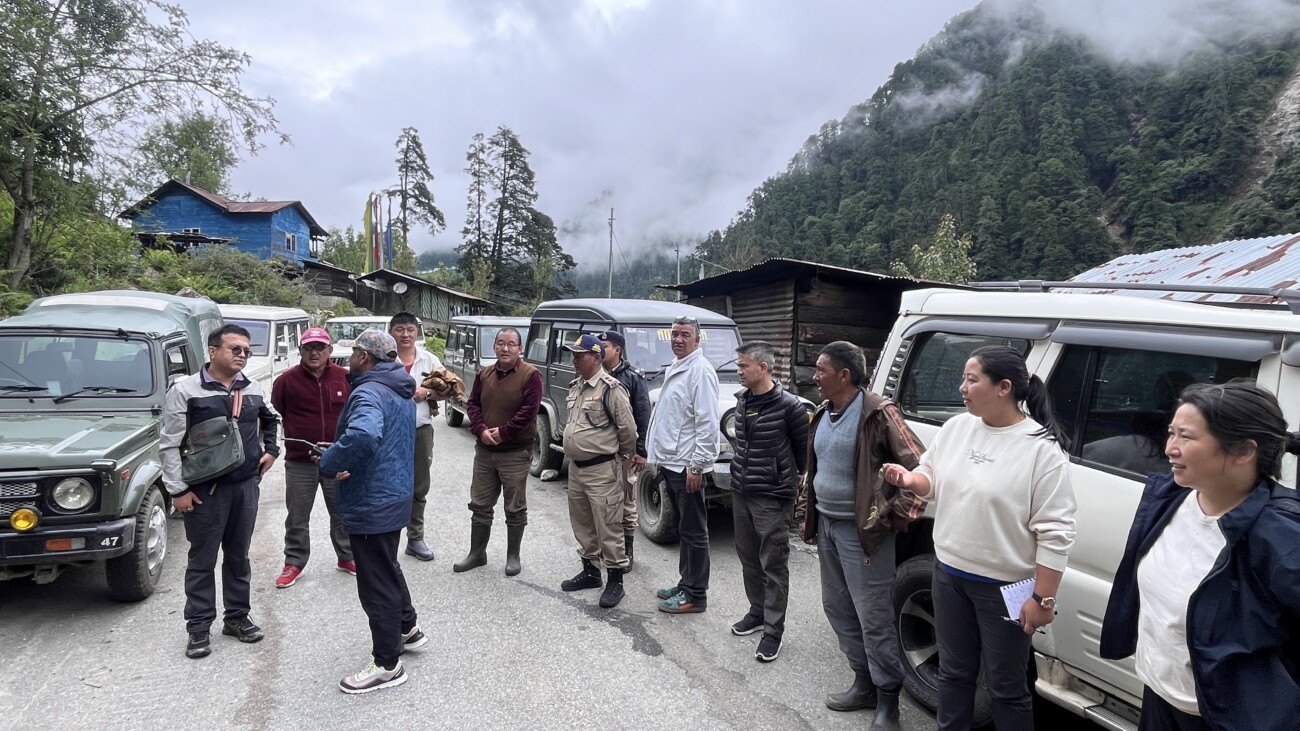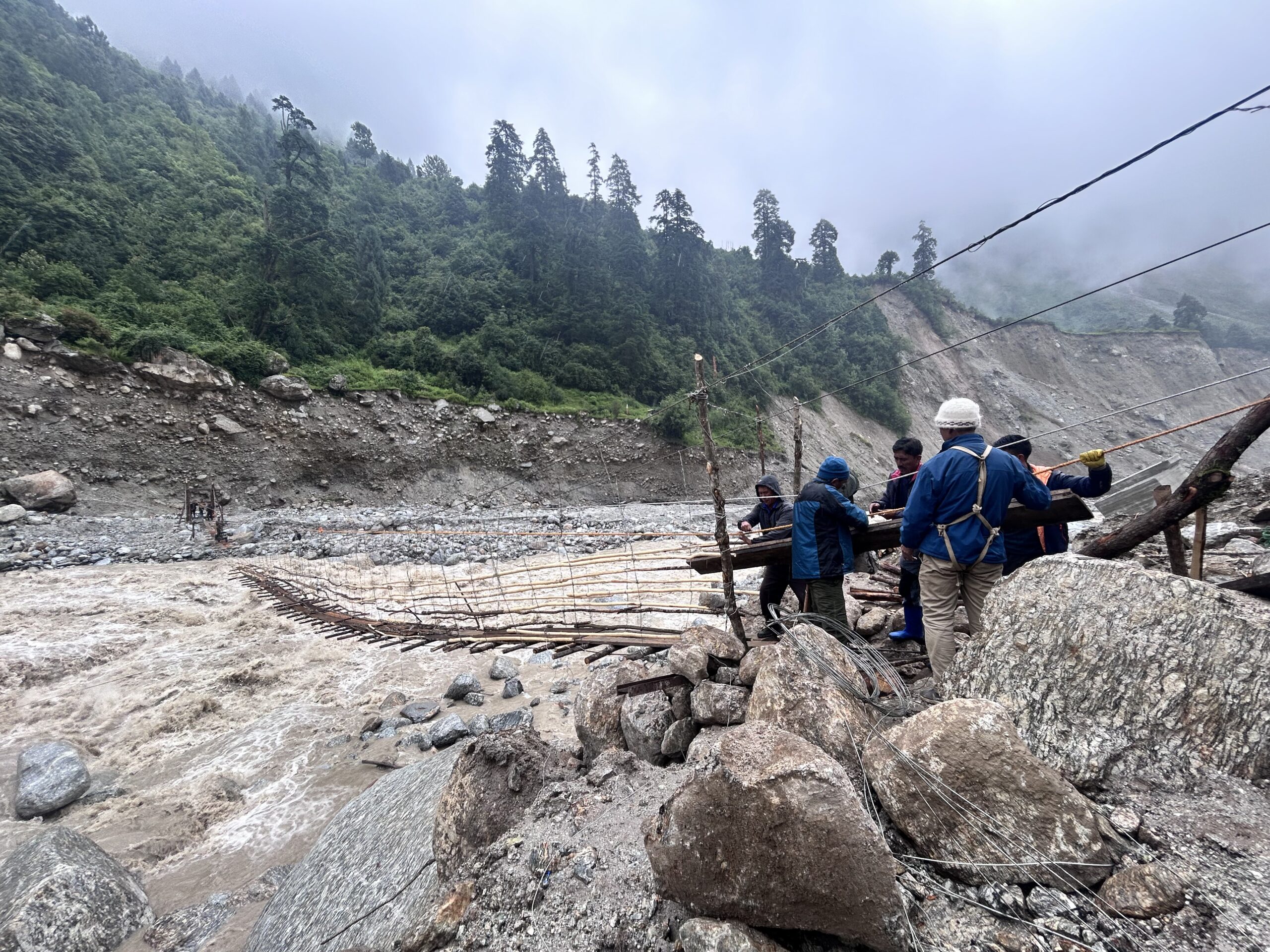Dzumsa is an institution that represents the identity and the culture of the Lachenpas and the Lachungpas-the highland-dwelling Bhutias in the North District of Sikkim. Historically, the Dzumsa have regulated these communities’ way of life and living. The dramatic political development in the sensitive border region of Sikkim culminated in the merger of the erstwhile kingdom of Sikkim to become the twenty-second state of India on May 16th, 1975. After that, the Dzumsa has evolved, adjusting to the changing political and economic development in the region. The acceptance of the ‘partial’ ideals of modern democracy, such as the elections of the Pipon and the entry of the Dzumsa within the framework of the modern state system, connotes such adjustments.
The paper attempts to delineate the continued relevance of the Dzumsa in the context of a changing environment where traditional institutions are undermined under the pretext of modernity. The paper will focus specifically on the natural calamities unleashed in the region and the role of the Lachen Dzumsa in mitigation. The Dzumsa-induced community participation during the 2023 South Lhonak Lake Glacial Lake Outburst Flood (GLOF) and the 2025 Lachen cloud-burst-induced landslides has been used to exemplify the continued relevance of this traditional local institution.
TRADITIONAL DZUMSA IN THE MODERN STATE SYSTEM
The 73rd Amendment Act, 1992, of the Indian Constitution established the Panchayati Raj Institutions in India. With the 73rd Amendment Act, Sikkim passed the Sikkim Panchayat Act in 1993, establishing a two-tier Panchayat Raj Institution at the village and district levels–Gram Panchayat and Zilla Panchayat. The Sikkim Panchayat Act was amended in 2001, whereby the Dzumsa was recognised at par with the Zilla Panchayat, and the Pipon–the head of the Dzumsa, was placed as a Zilla Panchayat member.
... the Dzumsa defines the community and gives them a distinct identity, defining their territory and space.
The Sikkim Panchayat (Amendment) Act, 2001, delineates that, “The existing system of the traditional institutions of Dzumsa practised in the two villages of the Lachen and Lachung in the north district of the state shall continue to exist under the traditional and customary laws of the Dzumsas”. Moving beyond its legal implications and recognition within the modern state system, the Lachen Dzumsa Pipon (headmen) Bandhu Lachenpa that the Dzumsa has been in practice for a long time. He stresses that the Dzumsa defines the community and gives them a distinct identity, defining their territory and space. The meaning of Dzumsa means a ‘gathering place’, but the Dzumsa also stands for an intrinsic arrangement of social and political apparatus composed of the Dzumsa executive council (lheyna) and the members (khepo), consisting of the household heads.

The Dzumsa executive council (lheyna) are elected by the members (khepo). As of 2025, Lachen Dzumsa consists of 289 public members and 72 monks. The candidate securing the highest vote becomes the Pipon, followed by the second Pipon, then the advisors to the Pipon (Gyambos) and treasurers (tsepos). Thus, in total, the Lachen Dzumsa council (lheyna) consist of two pipons, four gyambos, and two tsepos. Further, the two pipons nominate two gyapons who assist them in their daily activities. Apart from the elected executives, the council also consists of representatives from the Lachen monastery, led by the head monk (Chutimpa).
SHIFTING ENVIRONMENT AND THE ‘NEW’ ROLE OF THE DZUMSA
The Dzumsa’s overarching power, authority and responsibility in the region determine, to a considerable extent, in regulation of the local community’s conduct and the general pattern of Its everyday world. Its decision-making and the mechanisms in implementing them through fines and punishments are a huge factor in determining the local economic pattern, ecological practices and cultural traits. Remarkably, under the larger capillaries of modern technology and improved communication, Dzumsa’s mechanism and control have moved beyond the territorial spaces of Lachen.
The Dzumsa, as an institution, has exhibited a characteristic of a ‘flexible’ institution. With the changing environment in the Himalayas, the Dzumsa has to grapple with new challenges and accordingly adapt, amend and familiarise itself with the new environment to not only stay relevant within the new setting but also to serve the community’s interest. For a case, the entry of Dzumsa within the larger politics of political clientelism.
Sikkim’s changing political trajectories over the years and the entry of external agencies in the functioning of the Dzumsa through larger political clientelism, the gender question within the Dzumsa, the issues in the election of the pipon and the emergence of state-led modern welfare and development schemes have heightened uncertainty of the institution of the Dzumsa. A larger question about the loss of its autonomy has impacted its decision-making process.
Today, the Pipon has to bring development schemes and programmes, and distribute state-sponsored welfare schemes. As such, he maintains that the Pipon has to be in constant touch with the government and enter into a patron-client relation with the ruling government (party).

However, the important role of the Dzumsa, especially during natural calamities, underlines a changing role of the traditional local institution in Lachen. The Dzumsa’s role in mitigation and response to these calamities shows the continued relevance of the traditional local institution. Cho Bandhu (Lachen Pipon) states that the responsibilities of the Dzumsa have changed over time. Earlier, he said that the role of Pipon was to fix dates for harvesting and sowing of crops, fixing pastoral lands, dates for shifting of livestock from one pastoral land to the next and settling disputes. However, he points out that these roles have become minor responsibilities. Today, the Pipon has to bring development schemes and programmes, and distribute state-sponsored welfare schemes. As such, he maintains that the Pipon has to be in constant touch with the government and enter into a patron-client relation with the ruling government (party).
SOUTH LHONAK GLOF, LANDSLIDES AND THE DZUMSA
North Sikkim, in general, and in particular Lachen and Lachung, have suffered from frequent natural calamities affecting not only the physical infrastructure but also the economic activities of the people. The South Lhonak GLOF in 2023 isolated the region from the rest of the state for more than a year. Just as the conditions were becoming normalised and people were coming to grasp the situation, Lachen was struck by multiple landslides on May 30, 2025, as a result of excessive rainfall. More than four strategic bridges were washed away, and road connectivity, especially between Lachen and Chungthang, was broken. The remote and peripheral location of the region means that the area remains inaccessible and hampers the state’s responses, especially in times of natural calamities. As such, the first responders to natural calamity/ties are the local institution of Dzumsa.
The Dzumsa plays a key role in the mitigation of natural calamities, responding to the needs of the community, in relief delivery and in identifying the beneficiary and assessing the scale of the calamity. Within these settings, the role of Dzumsa demonstrates an interesting case of a local community-led institution in mitigating the impact, especially during these natural calamities in the region. The Dzumsa’s control and consent over the people make it the ideal institution in bringing about a regulation during the uncertain and chaotic space. The Dzumsa, as such, acts to fill the gap in the absence of the state machinery.

During the 2023 GLOF and the 2025 cloud-burst landslide, the first institutions to reach out to the people were the Dzumsa. The Dzumsa was critical in restoring connectivity. The functioning of the Border Road Organisation (BRO), the designated organisation in maintaining road connectivity, was also hampered due to the loss of connectivity. The transportation of skilled manpower and machinery became challenging and ineffective. The road construction machines and manpower could not reach Lachen. The vacuum was filled by the Dzumsa.
Many temporary wooden log bridges and jholunge bridges were built by the Dzumsa members, and even motorable roads, wherever possible, were constructed by the Dzumsa by using the machinery of the Dzumsa members in the initial days after the calamity/ties. These wooden log bridges, jholunge bridges and temporary roads came to aid the community, army personnel, tourists and tourist vehicles stranded during the crisis until the arrival of the state agencies.
Following the 2023 GLOF, former Pipon Khenthup Lachenpa states that the road connecting Lachen to Thangu at Zeema village, where Zemu River meets Lachen River, was built by the machines and manpower contributed by the Lachen Dzumsa. Similarly, the road connectivity at Tarum Chu connecting Lachen to Chungthang town was built by the joint effort of the Dzumsa and the state agencies.
The 2025 cloud-burst-induced landslide at Lachen showed a similar pattern of Dzumsa’s participation. The Dzumsa was able to actively mobilise members to assist in rebuilding the damaged roads. The foot over bridge at the Tarum River and a footpath were constructed by the Dzumsa members. Further, the clearing of the landslide debris was carried out under the supervision of the Dzumsa. The funds for these bridges have been provided by the state government.

The Dzumsa played a key role in distributing the relief and in identifying the affected individuals. The Dzumsa’s familiarity with the ground realities made the distribution of relief smooth. As Dzumsa keeps the records and the details of the members, it can assist the various government departments in processing the disaster relief and emergency assistance to the affected individuals. The distribution of the Public Distribution Service (PDS ) rice, gas cylinders, relief staple commodities, etc., was done through the Dzumsa. Pipon Cho Bandhu points out that these have been channelised through the Dzumsa to bring about equality and a sustainable use of the resources under the prevailing situation.
The Dzumsa argued that the larger state-led construction development in the region, the defiling of South Lhonak Lake by the scientific team and the rampant tourism activities led to the annoyance of the local deities, resulting in natural disasters. Therefore, the Dzumsa, with the Hotel Association, performed shaptens.
Moving beyond the scientific and technical nuances, the Dzumsa showed the spiritual connection and mitigation of the natural calamities through a sacred correlation. The Dzumsa organised numerous shaptens (puja) and offerings to the yul lha zhibdags (local deities). These shaptens were done at places which were most vulnerable to landslides. Interestingly, the Dzumsa had linked these natural calamities (especially the South Lhonak Lake GLOF) with the yul lha zhibdags.
The Dzumsa argued that the larger state-led construction development in the region, the defiling of South Lhonak Lake by the scientific team and the rampant tourism activities led to the annoyance of the local deities, resulting in natural disasters. Therefore, the Dzumsa, with the Hotel Association, performed shaptens. The evacuation and aid to the tourists during the natural calamities in general, and in particular during the 2023 Sikkim GLOF and the 2025 Lachen landslide, are an added new responsibility of the Dzumsa. Lachen and Lachung, over the past decades, have become tourist destinations. The larger inflow of tourists into the region has fundamentally shifted the community’s livelihood generation focus. Today, the majority of the population in the region is directly or indirectly dependent upon the tourism sector.
Gyatso Lachenpa, who was the Pipon during the 2023 GLOF, points out that the Dzumsa had to look after tourists stranded in Lachen. He said that he (Lachen Dzumsa) made it compulsory for the concerned hotels to give free lodging to the tourists. A community-run food langer for the tourists was set up by the Dzumsa. Further, volunteers from the Dzumsa members coordinated with the state agencies to rescue the stranded tourists. As such, the Dzumsa has used a clandestine method in responding to the needs of tourists during these natural disasters.
CONCLUSION
The routine response of the Dzumsa during these natural disasters illustrates the interconnection and synthesis of responsibilities, rights, and interests of the local institutions managed by the communities. The Dzumsa exhibited an organised leadership in bringing the community together and portraying a joint effort in mitigation, response and relief distribution during the natural calamities. The Dzumsa's new responsibilities and functions as such show its changing nature under the new political, economic and environmental changes. These responsibilities mark a fundamental shift from the traditional role of the Dzumsa, which included its role during death, marriages, and fixing dates for the shifting of the livestock.
The GLOF in September 2023 and the 2025 Lachen landslides and their aftermath exhibit the able crisis response mechanisms and institutional solutions of the Dzumsa. When state institutions/agencies are either negligible or absent altogether in the regions on the periphery, as seen during these two calamities, local institutions play a crucial role in mitigating the crisis. Thus, in conclusion, the effective role played by the Dzumsa in mitigating and responding positively to these natural calamities shows the flexibility and adaptability of the Dzumsa. It further underlines the effectiveness of the traditional institutions and their resilience and resourcefulness to meet new challenges.
ENDNOTES
Cho Bandhu Lachenpa was elected as the Lachen Pipon for the second time. He served as the Lachen. Pipon from 2012-13.
Author, Fieldnotes, 2025, Lachen.
Interview with Pipon Cho Bandhu, 09 July 2025, Lachen.
Author, Field notes, 14 July 2025, Lachen.
Interview with Khentup Lachenpa, 10 July 2025, Lachen.
Author, Field notes, 23 December 2023, Lachen.
Author, Field notes, 26 July 2025, Lachen.
Interview with Pipon Cho Bandhu, 09 July 2025, Gangtok.
Author, Field notes, 14 July 2025, Lachen.
Interview with Gyatso Lachenpa, 05 August 2025, Gangtok.
Dr. Sangay Lachenpa is a Post-Doctoral fellow at the Centre of Excellence for Himalayan Studies, Shiv Nadar University. He also serves as a guest faculty at the Department of International Relations, Sikkim University.

